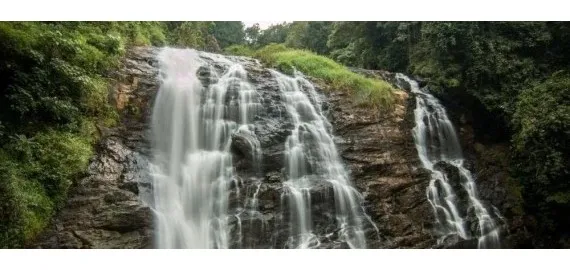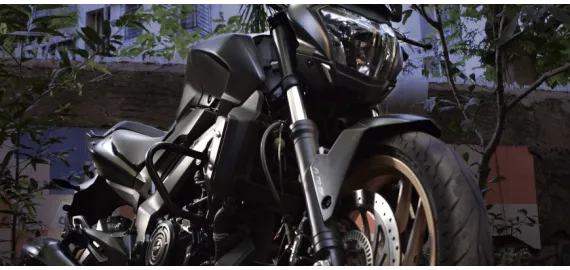Shopping Cart
Location
Cities
Dzukou: A Utopian valley of flowers and clouds
Blog
Home Blog
CATEGORIES
All Categories
Dzukou: A Utopian valley of flowers and clouds
Dzukou: A Utopian valley of flowers and clouds
Table of contents:
- Dzukou-the green Paradise
- Best time to visit
- How to reach
- And the Journey beyond myths
- Accommodation
- Food
- Cost
- Is it safe to trek solo
- Things to do
- Things to carry
- Point to remember
DZOKOU: THE GREEN PARADISE
Dzukou valley- the Shangri-La of this earth is a hidden treasure of Nagaland. The land of lush green forest, floating clouds, deep clear water and scented flowers, it is an ideal destination of your monsoon holidays. This untouched valley is located at the border of the Indian States of Nagaland and Manipur. Although it is at an altitude of about 2000 meters and sits high amongst the clouds so the valley freezes in the winter and covered with snows. But in summers, the land is full with mystic green hillocks, bluish green mountains and fresh wind carrying the essence of bright flowers. The most seen plant of this valley is the tough bamboo bush and an area full of the plant and flowers like a neatly mown lawn far away. On the bank of the two icy cold rivers-Dzukou and Japhu, the land comprises as a gateway of your summer gala.
This land of the wanderer is an antidote of your monsoon melancholy. The valley is not only a breathtaking beauty of Northeast but also a piece of fairyland in this earthly realm. You just stretch your eyes as much as you can, the valley will never disappoint you and surprise you with the astonishing caves; river cut ravines, hillocks and so on. The devouring beauty of this land is like begging your eyes to explore which has uniquely designed topography and sculpted over millennia by the erosion and weathering. The jaw-dropping scenery of the scented wildflower is a bonus to your eyes like a display of colours in front of your eyes. So it is the reason why the valley is called “the valley of flowers”. If you have not planned for those monsoon days yet, then just pack your beg for a trip to this wonderland. If you happen to already be traveling in Nagaland, we would strongly counsel you not to miss out on the Dzükou valley, even if its remoteness and inaccessibility do present some logistical challenges in getting there. It is one of the most sublime destinations in the northeast Indian state of Nagaland and indeed, in the entire Indian subcontinent.
BEST TIME TO VISIT
The best time to visit this enchanting valley is from June to September i.e. in the monsoon season as the valley is icy cold so it can’t be possible to travel in the winter. Most of the tourist came to this valley in Monsoon because monsoon makes the valley look even more refreshing and alluring with the sweet breeze of wind and scented aroma of lilies, aconitum, euphorbia and multi-coloured rhododendrons. You will feel like heaven has descended on the valley. When you enter the valley you will feel the temperature drop, so you must be prepared for the icy cold weather with warm clothes. And if you are planning to go in between October to May then you must know that weather of the valley in that time is unbearably cold and you can’t possibly see the original beauty of the valley that time.
HOW TO REACH
You are now thinking that reaching to that valley will be very tough probably took much effort. But if you are an avid traveler and love to explore then nothing can beat you. It is not a mammoth task and you will get the bonus of trailing green roads and hugged by the scented breeze. And of course, the cascading waterfalls, glassy blue streams of the river and the glance of the drizzling rainforest will call you for trekking down the hills.
After you reach Kohima, the destination of your journey is located a few kilometers away. There are two routes from which trekking to Dzukou Valley Starts. The approach you should take depends on the physical fitness of your body. Since the weather is very cold so, you must be prepared for the trip. There although two routes one is through Jakhama and another one is through Viswema. The Jakhama route is demanding and takes less time. On the other hand, Viswema approach is more gradual and it takes longer time. So, if you are physically tough and can beat the cold then only choose the second one.
Zakhama Village
If you are heading towards upward, then you will find a motorable road for about 3 to 4 kilometers. Then you have to walk for 4 to 5 hours. The steps are in good condition so don’t have to confuse and then you will finally arrive at the rest house in the valley. Then the path merges with the trail through the valley starting near Viswema village. The route is shorter than the Viswema route but it is the tough one. But you will never gonna regret afterward by taking this tough route if you want to explore the valley. Take this route only if you are a trekker type.
Viswema Village
The Viswema approach starts with about 8 kilometers of motorable road. The trail is comparatively easier than the Zakhama trail. The majority of the route is consists of relatively flat and hence it is easy for trekking. After the end of the motorable road, you can begin your hike from “Trekker’s Point”. After the steep climb to the top of the mountain, you’ll be in the valley. From there, it’s another pleasant two hours through the valley to reach the rest house. You can take this route if you are not into much in trekking. It is easier but more time-consuming.
AND THE JOURNEY BEYOND MYTHS
Etymologically, the word “Dzokou” suggests “soulless and dull” derives from the dialect of the Viswema of Angami tribe. The legends say that people of the nearby village of Angami tribe came to this valley by searching a place to live but they couldn’t grow crops due to the unfavorable and cold weather of the valley. They said the valley is “beautiful but dull and soulless”. Although there are many legends and fables describing the valley and its surrounding.
Such as the icy cold streams are believed to have curable properties. Another legend tells that white elephants are roaming in the valley and some of the locals see them. The valley lies between 25°31’0 N and 25°35’0 N latitude and 94°3'0 E to94°5'0 E longitude. The valley covers an area of about 27 sq. km and sits at an average elevation about 2,452 m above sea level. The highest peak in the Dzukou valley area is Mt. Iso. There are two different parts of the valley that people can visit- the west and the south.
ACCOMMODATION IN DZUKOU
There are probably three main options for staying in the valley of the flowers. There is the renting rest house, bring your own tent or you can sleep under the rock or camping in the caves. The Dzukou valley offers rest house or Pilgrims inn is a collection of five building and you can use it for the night stay. It is the best option if you don’t bring your own tent. The dorm cost 50 rupees per person and the private room cost 300 per person. And for the enthusiasts of camping, there are several natural campsites in the valley.
The valley is basically in no wifi zone. There is no electricity and network. So, you must pack your power bank and other important equipment with you. And also, there may be some problems regarding drinking water and other purposes. So, don’t waste water in the valley. Don’t litter and make any noise pollution during the visit of the valley. Don’t pollute the valley. It is a preserved land. Travel as much as you can, trek in the midst of emerald green hills and bamboo forest, roam the absolute desolate valley of million years but don’t disturb the serenity the valley holds inside every part, every particle of its enchanted dreamland.
FOODS IN DZUKOU
Though the valley is a feast for your eyes and souls, you have to live there with minimum expenses and things. So, you have to carry your own food except for the lunch and dinner. The only food point in the valley is the rest house where they serve only lunch and dinner. They have a kitchen in the rest house and the foods are the basics, rice, tea, potatoes, dal for 200 Rupees per person. But you have to carry enough water since there is a scarcity of drinking water. And carry dry fruits and snacks because the rent house provides only lunch and dinner so you have to be prepared for the breakfast and small meal for the daytime.
COST OF TRAVEL IN DZUKOU
The valley is not an exotic city where you can order food or clothes and get in a click. So, you have to learn how to live a minimalistic lifestyle. Carry only the things you need. Don’t carry any unnecessary things.
- There is an entrance fee for the travelers. The fee is 50 Rupees per person for the Indians and 100 Rupees per person for the foreigners
- If you take any transport from Kohima to Viswema then the expense will be 50 per person.
- The accommodation is 50-150 Rupees for the rest houses and 300 Rupees for the private room.
- The dinner and lunch in the rest house cost 200Rupees per person for each of the meal.
- If you take a guide then it will be extra according to their charge. For a better experience, you should book a guide who will help to find out the routes and places.
- Tea or coffee is also chargeable in the rest house as 20 Rupees.
- You can borrow a blanket, pillow, foam sheet which is 50 Rupees for each.
IS IT SAFE TO TRAVEL SOLO?
The Nagaland is approximately safe for solo traveling but going to Dzukou alone is not recommendable since the roads are tough and one has to hike or trek. Moreover, there is no internet and phone connection- it is like one has to be his/her own. The path is safe but it is better to have a company with you which will make the journey more precious and comfortable.
THINGS TO DO ON A TRIP TO DZUKOU
This enchanted valley is a natural bliss for the travelers. Not only just trekking the valley will transcend the viewers with surprises. We pick a handful of things you can try during the time of travel. Let’s wonder where the wifi is weak.
- Trek to the Dzokou Valley: Life is better with a hiking boot, isn’t it! And if you are an avid trekker then you can definitely try a trip down there. The journey only requires you to put one foot in front of the other, amazed by viewing the beauty and start again and again and again. If you start early in the morning and take the route from Kohima to Zakhama check Post then you will find a trail along with a stream in midst of the green carpet of bamboo. The first stage of the route involves a steep hour and a half a climb through thick evergreen forests. Once the climb finishes, a six-kilometer traverse through stunning landscapes of dwarf bamboos will get you to the campsite. Then you can walk down to the source of Dzokou River and explore the mesmerizing beauty of the valley. You can also view the panoramic beauty of the valley from the top.
- Hiking in the Japhu Peak: The Japhu Peak is one of the amazing tourist attractions in Nagaland and because of this beautiful place Nagaland is called the “Switzerland of the east”. The peak is located 25 kilometers from Kohima and also you can view the Dzokou valley from the top. The best time to hike in the valley is from June to September when the flowers are full bloom and also the valley offers a spectacular serenity to the viewers.
- Visit the war cemetery: The war cemetery in Kohima was built in the memory of the soldiers who were lost in the Second World War. It was built in the year 1944 for the soldiers of the allied force of 2nd British Division. The place tells the ancient history of the valley and about the people with courage and patience. Although, you can visit many nearby places and do activities you like. If you are thinking a little bit of shopping then you can find your destination in Urban Haat, Senapati Market, Chumukedima Market and Wokha Market. You can also trek to the Garrison Hills if you want where the cemetery is situated. But it must be noted to take a local guide since it is a forest area.
- Explore History with the Kachari Ruins: A majority of the tourist visiting this place with a curious mind to know about the architectural history of the valley. A long way back the valley was ruled by the Kachari Kingdom and the valley is a depiction of their reign. If you are enthusiast about the history then you can travel to Dimapur where you will see the ruins of the Kachari Kingdom from the 10th Apart from the mesmerizing thrills of hiking and trekking one can also be a part of the historical treat.
- Live like a Naga! Experience life: The valley also stores an experience of a Naga lifestyle for the travelers. There is a village called Touphema, where you can undergo their lifestyle with a novel experience. This village is self-funded, organized and designed by the joint efforts of the different Khels or clans and was set up in 2001. The village offers a unique glimpse of the rural Naga lifestyle which unfolds the deep Angami cultures and cuisines. The place is not only for food and shelter but also a retreat of peace and tranquility in the heart of nature. The village is not only a great example of cultural immersion but also it is a window to the natural beauty and so it is widely successful among tourist. One can learn so much by living in the beautiful huts here.
- Tour to the ancient valley-the Museums: If you have enough time in your pocket then grab a bite and take a tour to the museums in Kahima which offer a rich heritage and ancient roots of the valley. The museum exhibits the traditions and cultures, the items of the pre-independence era, scientific equipment etc. As for example, in Nagaland State Museum you can get to know about the lifestyle of the varied tribes living in the state which displays traditional dresses, jewelry, ancestral equipment etc. Also, for the art lovers, there is an art gallery where you can find the stunning paintings by the local artists. Another one is the Kohima Museum which cherished the unforgettable tribal journey of the people and their culture.
- Enjoy birding in Khonoma: Khonoma is a historic Naga Angami village reserving for birding. The safe destination of birds is maintained by the village community. It covers approximately 70sq km of the valley. Here, you can experience the picturesque view of the birds living in midst of the forest.
THINGS TO CARRY:
Before packing your bag to Dzokou valley you must carry some essential items as follows:
- Woolen clothes, socks, gloves and other woolen accessories
- Two pairs of lightweight trousers or pants
- A lightweight umbrella
- A woolen hat
- A camera and its accessories
- A Power bank
- An easy to carry a notebook
- Duffle bag or rucksack to carry things for trekking
- Water bottle
- Towels
- Toiletries
- Torch with batteries
- Boots for walking. If it is new then try first and pick a boot which is not wet easily as you have to cross rivers during the trekking
- Medicines
- Dry fruits and snacks. The rest house only offers lunch and dinner.
- Carry your drinking water as you can at least for two days
POINTS TO REMEMBER
There are basic points to be remembered before you entered the valley.
- The valley is an offbeat destination and the routes are narrow with only stones and mud.
- There is no specific source of drinking water. So, carry your own
- There is no internet network and phone service. And they don’t have electricity so carry your power bank
- There are many trekking shops in Kohima. You can buy or rent from the shops
- If you are a tourist then you should collect ILP Inner Line Permit from any Nagaland House
- Foreign visitors have to register at any local Foreigners Registration Office.
- Avoid starting your journey on a Sunday because Nagaland is a Christian state so you may not find any taxis
- Don’t make noise, don’t pollute and don’t litter. Carry a small garbage bag
Dzokou is truly a place of wonder and fantasy, a piece of serenity for the traveler. It is a perfect destination for viewing the unique flora and fauna. This may be the most beautiful and adventurous trip on your bucket list. Walk along the paths less traveled. Faire-le-tour-de to the valley of flowers.
Grow your business with Rentrip.
List your bike and become a member of rentrip family.








Comments
Be the first one to comment on this post.
Submit a Comment
Login or Register to add your comment